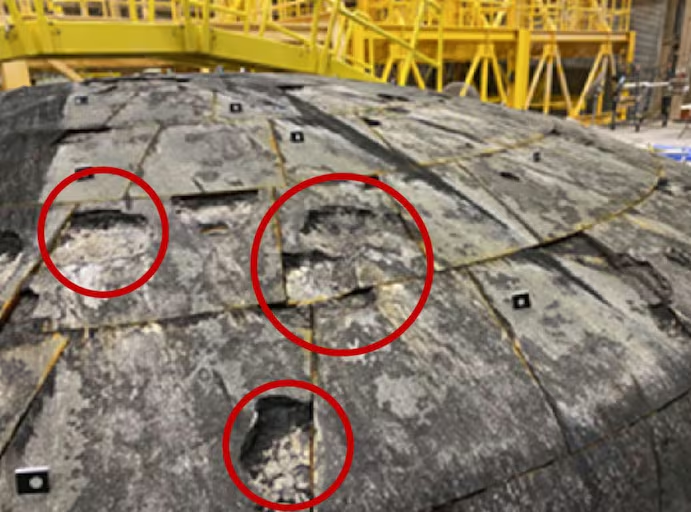All about Artemis
In December 2022 the first mission of the Artemis program returned to Earth, and now, a surveillance report has revealed that the Orion spacecraft suffered damage in more than 100 places during its re-entry into the atmosphere. The problems were much greater than NASA engineers expected, raising doubts about the likelihood of the program going as expected.
For those in a hurry:
- The surveillance report revealed problems with the heat shield, some spacecraft screws, and the launch structure;
- Furthermore, concern was also expressed that these problems would disrupt the Artemis program schedule;
- NASA pointed out that the tone of the report made them concerned, as the problems highlighted were already being discussed.
Problems at Orion
During reentry, the capsule faced temperatures of 2700 degrees Celsius at speeds of 40 thousand kilometers per hour. Although she survived, photos of her heat shield showed that instead of melting as predicted, it actually had grooves that look like small holes. According to the report, if something similar happened on the next Artemis missions, the problems could lead to the loss of the vehicle or even the crew.
The report also highlights how spacecraft problems could create challenges for NASA and its timeline for humanity’s return to the Moon. The Artemis 2 mission was initially scheduled to take place in 2024, but earlier this year the agency postponed it until before September 2025, a lot to understand how the heat shield damage occurred.
Although NASA Administrator Bill Nelson recently pointed out to a congressional committee that he still believes the human landing on the Moon will happen by the end of 2026, the report suggests otherwise. In addition to the problems with the heat shield, the screws on the crew module were exposed, causing greater heating and greater erosion than expected.
The surveillance report also pointed out that the Space Launch System rocket, which took Orion into space, ended up causing problems with ground equipment, such as damage to an elevator in the launch tower. All repairs to the structure cost NASA around 25 million dollars, when it was expected to cost just 5 million.
Read more:
How NASA received the report
The report concerns NASA, Catherine Koerner, the agency’s associate administrator, in response to the Washington Postpointed out that the problems were already being addressed before the report was published.

NASA hoped to discover and solve problems before Artemis 2. This process of finding and addressing engineering challenges is a natural part of the design, test, and fix process. NASA is concerned that the tone of the report may suggest that the [Inspetor Geral] identified the risks discussed, when in fact all recommendations were already being addressed by NASA through a risk-based provision prior to the audit.
Catherine Koerner
NASA formed a team of investigators to understand how the erosion happened and why it performed differently than expected. So far, researchers have not reached a conclusion, as it is not possible to recreate the conditions for re-entry into the atmosphere. Additionally, engineers are investigating ways to mitigate the loss of coal in the heat shield by modifying its design and planning other Orion re-entry trajectories into the atmosphere.







